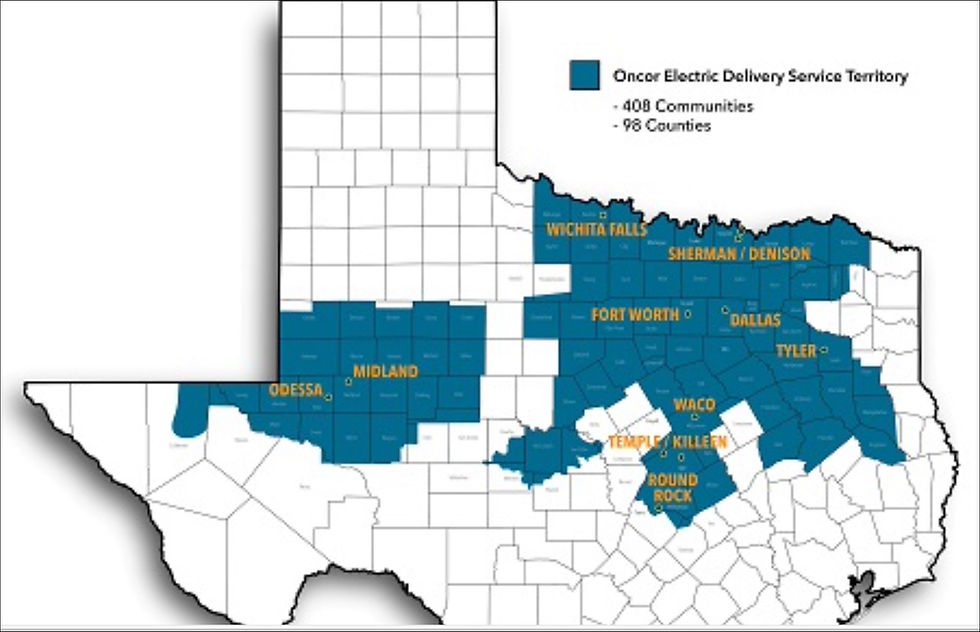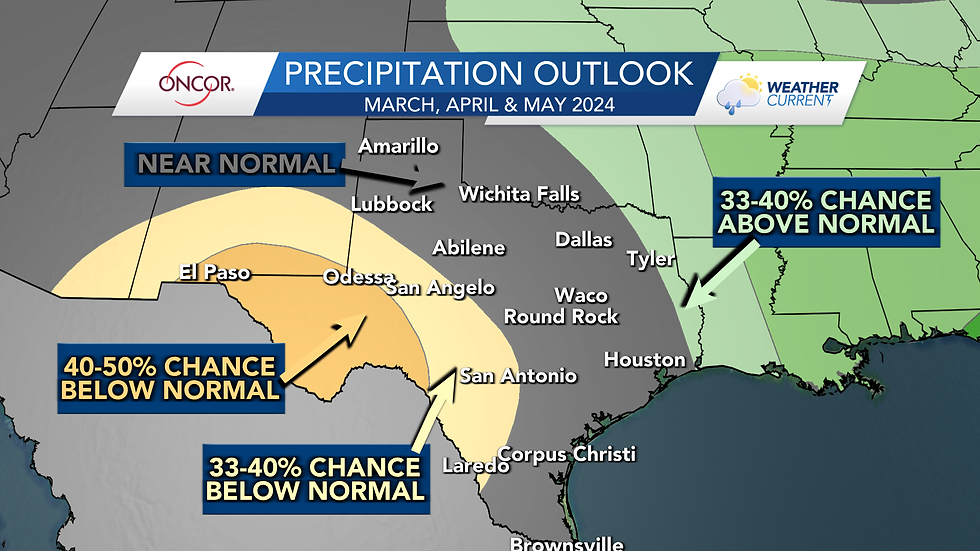ONCOR's plans for keeping our electricity on during the Texas wild-west weather. Spring 2024 Weather Outlook
- Manager
- Apr 1, 2024
- 3 min read

Summary: ONCOR Prediction: "These outlooks support the idea that weather extremes are not expected over the spring, as a whole." Parker County has its energy delivered by ONCOR, the largest energy delivery company in Texas. Their weather forecast guides their plans for keeping our electricity on during the Texas wild-west weather.
Latest Update: posted 01 April, 2024
Select #Tags for additional articles: #Electricity
ONCOR's plans for keeping our electricity on during the Texas wild-west weather. Spring 2024 Weather Outlook.

Parker County has its energy delivered by ONCOR, the largest energy delivery company in Texas. Their weather forecast guides their plans for keeping our electricity on during the Texas wild-west weather. ONCOR Prediction: "These outlooks support the idea that weather extremes are not expected over the spring, as a whole."
• Spring 2024 Weather Outlook, Oncor, 28 March 2024, Excerpts.

Spring officially begins at 10:06 p.m. on Tuesday, March 19. However, it’s already feeling and looking like it across Texas! Trees and grasses are looking greener, the bluebonnets are blooming and your allergies may be driving you crazy.
The arrival of the new season also begs the question, “What kind of weather can Texas expect?”

One of the biggest factors used when making seasonal forecasts is the presence of El Niño or La Niña. These short-term climate patterns can offer generalizations about upcoming weather patterns, but they should not be used to make specific weather forecasts.
El Niño can result in wetter and cooler weather patterns for Texas and the Southern U.S. Conversely, La Niña can mean warmer and drier weather patterns.
The cycle of moving back and forth between El Niño and La Niña is referred to as ENSO, or El Niño/Southern Oscillation.
This spring, El Niño is ending and the NOAA expects ENSO-neutral conditions to begin as early as April. As a result, we can expect little to no influence from El Niño on weather patterns this spring.
With no influence from El Niño to guide a seasonal forecast, it helps to look at seasonal norms for an area to help determine what the weather might be like. Seasonal norms are determined by taking the average over a period of time for a location.

[Here] are the average temperatures and precipitation in spring for different locations across Texas. This data is the average over nearly the last 30 years. For example, in DFW, the average high temperature for the month of April is 76 degrees. In Midland, it’s 81 degrees.

There are also seasonal outlooks issued by NOAA’s Climate Prediction Center for temperature and precipitation. For this spring, temperatures are expected to be near normal across the state.
Precipitation is expected to be near normal for much of Texas, with below normal precipitation across the far western portion of the state.
These outlooks support the idea that weather extremes are not expected over the spring, as a whole. This is likely due to a lack of strong influence from El Niño or La Niña. However, that doesn’t mean there won’t be thunderstorms or the occasional chilly day over the next few months.
In fact, spring storm season is already in full swing. Make sure your family is prepared by assembling your storm safety kit and completing your power outage safety checklist.
This information comes from Oncor’s meteorologist, Kaiti Blake. Kaiti is an AMS Certified Broadcast Meteorologist.
Comments